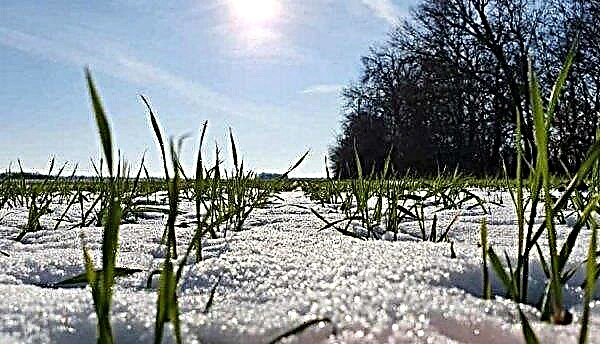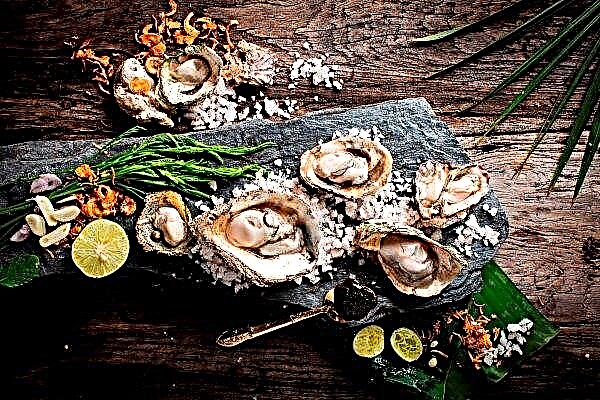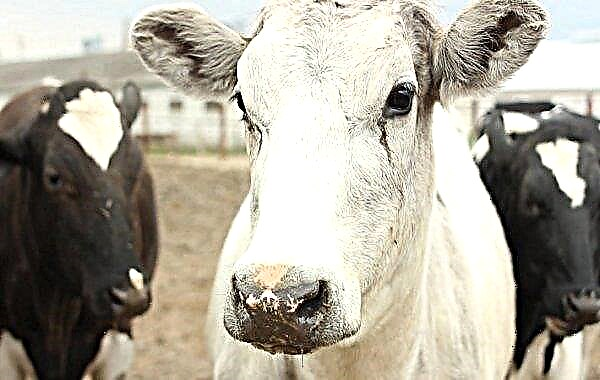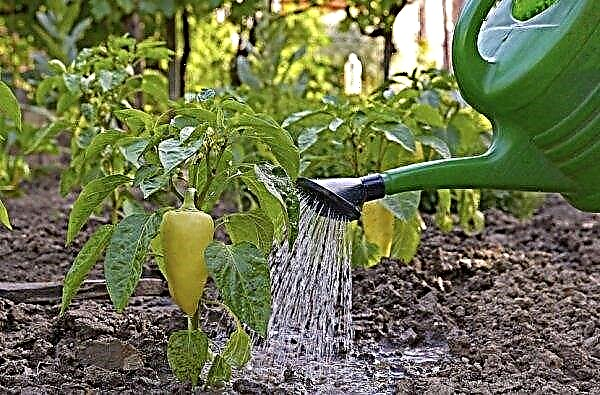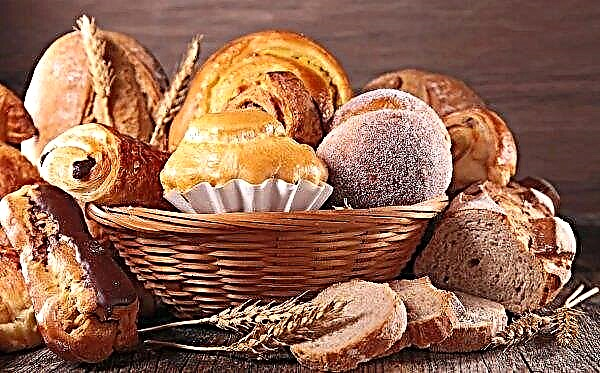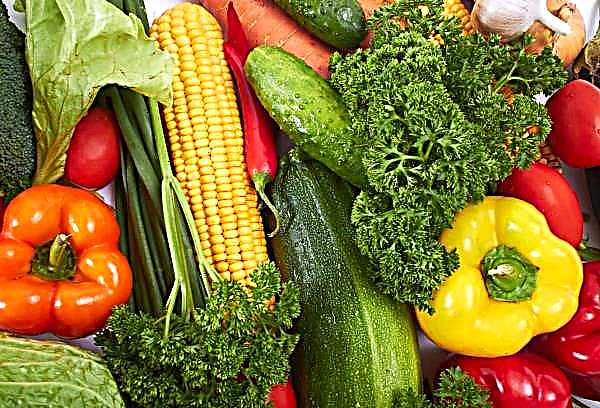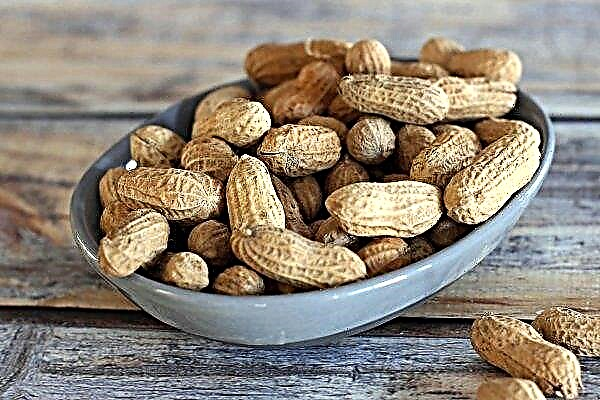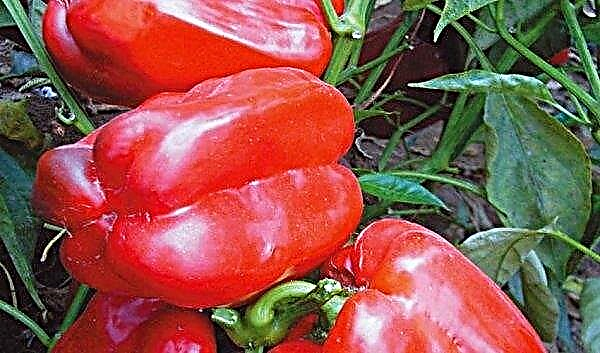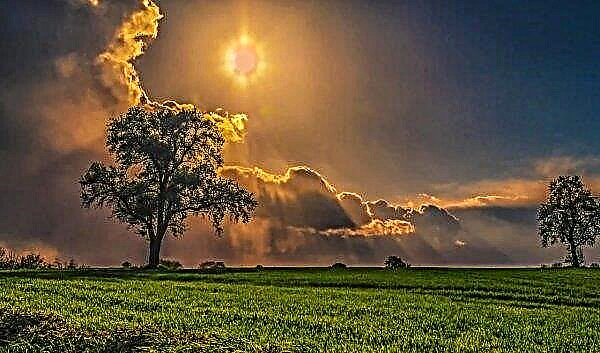Gardeners who dream of harvesting pears in a personal plot will benefit from Favoritka. He has many virtues that are time-tested. Fruit tree for a long time delights gardeners with bright taste and unpretentiousness in cultivation.
Favorite Pear Description
The variety is popular among modern gardeners. Its creator is considered the American breeder T. Clapp, who bred the variety in 1860. This pear is also commonly called the Clapp's Favorite. Thanks to the excellent varietal characteristics, the pear was able to gain universal respect from gardeners and consumers.
Did you know? European residents smoked pear leaves until the end of the 15th century, while H. Columbus brought tobacco from America discovered by him to the continent.
Tree description
According to the botanical description The favorite is referred to as fast-growing trees. An adult plant reaches a height of 5-6 m. In the course of growth, a small rare and weeping crown of a pyramidal shape forms in a young tree. The trunk of an adult tree is powerful. On the branches, the bark is smooth, and on the trunk with a slight peeling. The leaves have an oval shape with a pointed end. Large-sized flowers, white in color, form an inflorescence of 6-7 pieces. The fruiting of an adult orchard is 50-60 years.
Fruit Description
The size of the fruit varies between medium and large. The maximum weight is 252 g, and the average is 180 g. The fruit is elongated, ovoid with a soft and smooth skin. The pear pulp is tender, juicy, white with a pleasant sweet and sour taste. Ripe fruits are painted yellow with a bright red spot on the lit side. Small, faint spots are visible on the peel.
Ripe pears contain many nutrients, namely:
- dry - 13.7%,
- titratable acids - 0.4%,
- sugar - 8.3%
- ascorbic acid - 6.6 mg per 100 g.

Variety Characteristics
Consider the features of the Favorite variety that distinguish this pear variety from others.
We recommend you to get acquainted with summer varieties of pears:
Disease and pest resistance
Like any fruit tree, the Favorite pear can be susceptible to disease and suffer from pests. The plant can get scab, fruit rot and rust. Among the pests, the Favorites note:
Drought and winter hardiness
Young seedlings are susceptible to frost and may freeze before fruiting. To prevent this from happening, for winter, the near-stem circle should be mulched, and the tree itself should be covered with snow. Saplings, which are 2-3 years old, are able to withstand frosts down to –30 ° C. Mature trees are characterized by high frost resistance and drought tolerance.
Did you know? The largest pear is grown in Japan. Her weight was 2.948 kg. The fruit was added to the Guinness Book of Records on November 11, 2011.
Pollination
The favorite is not a self-fertile variety. To obtain a crop next to it (at a distance of 5-7 m), it will not be superfluous to plant pollinators that coincide in flowering time. The best of them are: Williams, Dessert, Forest Beauty, Tauride or Bere Giffard.
Timing of flowering and ripening
The plant blooms for a long time, which comes in the spring. Inflorescences form 5–7 large and fragrant flowers. The fruits begin to ripen at the end of July, but experienced gardeners recommend taking them 7 days earlier to prevent them from falling off.
Productivity
With proper care of the garden from an adult tree, you can collect at least 34–36 kg of the crop. Depending on the region of cultivation, during the period of life from 1 ha, you can get a crop from 180 to 300 c.
Transportability
The variety tolerates movement well. Ripe fruits for 15 days retain their product characteristics and are suitable for transportation.
Advantages and disadvantages of the variety
Like any fruit, pear Favorite has its own advantages and disadvantages, which should be familiar with before planting the plant.
- The advantages of the Favorites include:
- resistance to severe frosts;
- excellent tolerance of dry summers;
- high productivity on infertile soils;
- high commercial quality of fruits;
- resistance to pests and diseases.

- According to professional gardeners, a variety has the following disadvantages:
- late fruiting period of the tree (at 7–9 year of life);
- the future crop depends on neighboring pollinators; the variety is not self-fertile;
- poor scab resistance;
- high growth of an adult tree;
- a short shelf life of plucked fruits, a tendency to shedding.
Agrotechnics growing and care
The fruit needs ordinary care, which includes standard methods of agricultural technology, taking into account varietal characteristics.
Important! To protect the plant from the negative effects of pests and solar activity, the stem is recommended to be whitewashed with a lime solution. Also for the winter, the tree trunk and main branches can be coated with a mass of clay and lime with the addition of substances with a strong odor.
Landing time
It is advisable to plant a variety before budding in the spring. At this time, the young seedling spends all its strength on rooting and growth. For the implementation of spring planting, preparatory work is required to be carried out in the fall.
Site selection and well preparation
The gardener should be responsible for choosing a place, because it’s a pear to grow on it for more than a decade. To plant a tree, you need to prepare a hole with a depth of 1-1.2 m and a diameter of 80 cm. The seedling should be placed neatly in the hole so that the roots are straightened. The root neck is placed 3 cm above ground level. For better growth, the tree is grown in the south or southwest side of the garden. The landing site should be well ventilated, protected from the winds. The soil for planting seedlings is recommended to choose loose, drained and slightly acidic, without stagnation of water.
For better growth, the tree is grown in the south or southwest side of the garden. The landing site should be well ventilated, protected from the winds. The soil for planting seedlings is recommended to choose loose, drained and slightly acidic, without stagnation of water.
Important! It is advisable to put drainage at the bottom of the pit, and add compost or humus mixed with earth on top. It is enough to add 3-4 kg in one well.
Watering frequency
After planting, young seedlings should be watered abundantly with water. Up to 3 buckets of water are recommended for each tree. Further care is important to obtain stable crops in the future. In the first year of growth, the young garden is often watered, without bringing the soil to dry, in the season it is enough to conduct 3-4 irrigation. In the future, watered 3 times a year, to the entire depth of the roots. The amount of watering should be such that the water can penetrate to a depth of 75–85 cm.
In the first year of growth, the young garden is often watered, without bringing the soil to dry, in the season it is enough to conduct 3-4 irrigation. In the future, watered 3 times a year, to the entire depth of the roots. The amount of watering should be such that the water can penetrate to a depth of 75–85 cm.
Fertilizer application
If during planting a sufficient amount of fertilizer is introduced into the pit, there is no need to feed the young plant for 3-4 years. Peat, humus and sand should be added to the planting hole in equal amounts, 400–500 g of superphosphate and 2-3 l of dissolved wood ash should be added.
When feeding pears, follow these recommendations:
- phosphorus-based fertilizers are applied in the autumn period at the rate of 30–40 g per 1 m²;
- saltpeter and nitroammophosco are also introduced in spring at the rate of 30–40 g per 1 m²;
- it is advisable to feed plants with potash fertilizers at the beginning of summer at the rate of 10 g per 1 m²;
- boric acid solution is used during flowering, at the rate of 0.2 g per 1 liter;
- rotted mullein is introduced under the tree during the period of fruit growth 3-4 times with a frequency of 10 days. To prepare the solution, it is necessary to dilute 2 liters of organics in 10 liters of water.
Video: pear fertilizer
Pest and Disease Control
To destroy most pests in the early spring, before the onset of flowering, it is necessary to carry out initial preventive treatment with insecticides on the green bud cone. For this procedure, you can choose any drug that is sold in specialized stores, you only need to carefully follow the instructions for use. You can use drugs such as Metaphos and Decis.
To prevent and prevent scab gardeners recommend 3 times a season to spray the orchard with Bordeaux liquid. The first spraying must be carried out immediately after the snow has melted. So that unnecessary pathogens do not affect the tree trunk, in early spring it should be examined for cracks and whitened, as pathogens like to live in it. If cracks are found on the tree trunk, the battle must begin treatment. Cracks are treated with 1% solution of copper sulfate and sealed with a layer of garden var. The procedure will protect plants from diseases such as black cancer and gummosis. In the autumn period, after the end of seasonal work, you should clean up the garden. To get rid of pests and spores of fungal diseases, experienced gardeners collect and destroy all fallen leaves and weeds.
If cracks are found on the tree trunk, the battle must begin treatment. Cracks are treated with 1% solution of copper sulfate and sealed with a layer of garden var. The procedure will protect plants from diseases such as black cancer and gummosis. In the autumn period, after the end of seasonal work, you should clean up the garden. To get rid of pests and spores of fungal diseases, experienced gardeners collect and destroy all fallen leaves and weeds.
Important! After flowering, for the prevention of fungal diseases, the pear garden must be treated with such drugs as "Chorus", "Quadrice." Processing is carried out with an interval of 2-3 weeks.
Preparing landings for winter
Young seedlings should be carefully prepared for the winter. To get a good harvest for next year, the soil around the tree must be dug up and also fertilized. Digging the soil is at a depth of 30 cm. For the winter, the tree can be fed with a mixture of humus, superphosphates and ash. Do not forget about the garden in winter. The main pests at this time of year for young pears are rodents that love to feast on young bark. In this regard, after snowfalls, it is necessary to trample the snow around the trees so that the mice cannot break through the passages to the tree. The barrel can also be wrapped in burlap with impregnation based on tar or metal mesh.
The main pests at this time of year for young pears are rodents that love to feast on young bark. In this regard, after snowfalls, it is necessary to trample the snow around the trees so that the mice cannot break through the passages to the tree. The barrel can also be wrapped in burlap with impregnation based on tar or metal mesh.
Harvesting and storage
Klappa’s favorite is summer varieties, so ripped fruit has a short shelf life. Harvesting falls at the beginning of August. If it is necessary to maintain the harvest for a long time, the fruits are recommended to be ripened unripe, along with the stem. However, for ripening, the fruits must be dry and in a room that is regularly ventilated. Harvest is better to collect in the morning.
Video: when to harvest pears
Fruits are recommended to be stored in a clean container. In the conditions of room storage, pears lie for about a week. You can store the pear in a plastic bag 30-60 microns thick and with a capacity of up to 2-3 kg. To do this, the fruit should be pre-cooled and tightly closed after packaging. You can also store fruits without the use of containers, laying them out on paper shelving. To immediately see which fruits begin to rot, it is recommended to place them in one layer. This will prevent timely infection of neighboring fruits.
Having studied the description and main characteristics of the Favoritka variety, as well as adhering to the above rules and recommendations regarding the care of it, you will certainly get a good harvest of pears.

